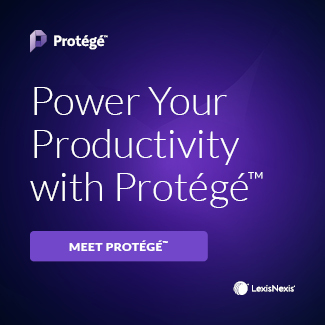Why Modern Legal Risk Demands Continuous, Connected Due Diligence In today’s interconnected economy, legal risk doesn’t just live in courtrooms. It hides in supply chains you can’t fully see, in the...
Arbitration or litigation, the advantage goes to the side that masters the facts. Discover how disorganization derails even strong cases — and how CaseMap+ empowers legal teams to turn complex information...
Sayeh Hassan and Anna S.P. Wong’s Canadian University Law is a groundbreaking guide for those involved in the resolution of legal issues raised in our nation’s post-secondary institutions, but it is much...
Summary: Lexis+ AI Canada delivers reliable, citation-backed legal research and drafting tools, built exclusively on Canadian authorities. With bilingual support, data security protections, and integration...
Lexis ® Create+ for Outlook ® transforms the inbox into a drafting workspace for Canadian lawyers. With trusted LexisNexis content, firm precedent, and AI-powered insights, it streamlines email-to-document...

Why Modern Legal Risk Demands Continuous, Connected Due Diligence
In today’s interconnected economy, legal risk doesn’t just live in courtrooms. It hides in supply chains you can’t fully see, in the background of your client’s next acquisition, and in the reputations of partners operating across the globe.
For law firms and in-house counsel, due diligence is no longer a one-time box to tick — it’s a continuous discipline. Yet many legal teams still rely on fragmented sources, ad-hoc processes, and siloed information. The result? Gaps that could expose your organization or your client to regulatory penalties, reputational harm, or costly litigation.
The Expanding Scope of Legal Due Diligence
Traditionally, due diligence centered on transactions—M&A deals, financing, and major contracts. Today, the mandate has broadened. Counsel is now expected to weigh in on:
- ESG and reputational risk: Stakeholders increasingly view environmental, social, and governance performance as a legal and strategic concern. ESG ratings powered by CSRHub aggregate data from over 800 sources, giving legal teams a fuller picture of a company’s environmental and social footprint.
- Global sanctions and regulatory regimes: Compliance is no longer domestic by default. Canadian legal teams must navigate overlapping frameworks from the U.S., EU, UK, and beyond.
- Third-party and supply chain integrity: Even indirect relationships can trigger liability or reputational fallout.
- Real-time risk monitoring: A “point-in-time” report may be obsolete the moment it’s delivered.
The challenge? The information that drives these assessments is scattered across jurisdictions, languages, and formats — and often buried under noise.
Where Technology Becomes a Legal Advantage
This is where advanced due diligence platforms, like Nexis Diligence+, are shifting the paradigm for legal professionals. They don’t just compile data; they synthesize it into a single, auditable view of risk that supports counsel’s decision-making in fast-moving, high-stakes contexts.
In a cross-border acquisition, hours matter. With the right platform, you can:
- Map every known business and personal connection of the target’s executives.
- Identify ultimate beneficial owners of entities using integrated Dun & Bradstreet data — a critical step in meeting anti-bribery and financial crime regulations.
- Identify pending litigation across jurisdictions.
- Surface negative press in regional languages before it reaches mainstream outlets.
- Package it all in an auditable report fit for regulators or the courts.
This isn’t just efficiency; it’s risk mitigation at a level manual research can’t realistically achieve.
From “Nice to Have” to Fiduciary Imperative
Legal advisors are fiduciaries. That means your advice carries a duty of care, whether to your client, your board, or your shareholders. In an era where regulators expect organizations to know not just their partners, but their partners’ partners, the argument for robust, technology-enabled due diligence shifts from “helpful” to “essential.”
By integrating tools that provide:
- Global news and watchlist monitoring
- Litigation, regulatory, and financial records
- Every search and report is time-stamped and can be stored in the customer's central repository, creating a defensible audit trail for compliance and regulatory review
…you’re not just adding capacity, you’re strengthening your ability to identify and advise on risks others might miss.
The Strategic Payoff
Lawyers who embrace advanced due diligence aren’t just mitigating risk; they’re creating strategic value. They can advise on deals with greater confidence, spot compliance red flags earlier, and build trust by showing that no stone has been left unturned.
Clients notice that. Boards notice that. And increasingly, so do regulators.
The takeaway:
In 2025, the most effective legal teams won’t be those with the biggest libraries or the longest memos, but those who see the risk landscape most clearly, act on it fastest, and document it best.
Tools like Nexis Diligence+ are not replacing legal judgment; they’re empowering it. And for legal teams navigating a global, high-velocity risk environment, that empowerment may be the ultimate competitive edge.


